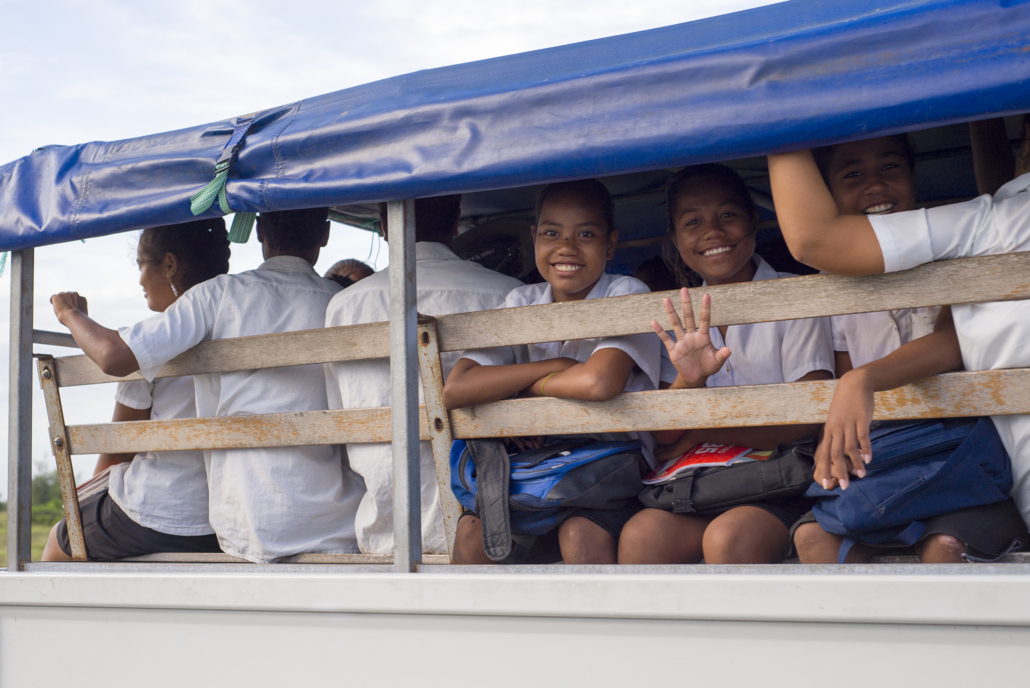Addressing Child Poverty In Kiribati

As a country that is geographically isolated, fragmented, environmentally vulnerable and economically challenged, Kiribati struggles with degraded soil, and challenges with education access, along with overpopulation. This trickles down to the children–the heart and bulk of its society. About 21.9% of the country lives below the poverty line, living off of subsistence farming, sea-faring industries or opportunities in the urban center of South Tarawa. Child poverty in Kiribati results in a lifestyle for those who must fend for themselves.
The Current State
Kiribati is a youthful country. About 36% of the population is under the age of 15. The under-5 mortality rate sits at 48 per 1,000 live births and has one of the highest neonatal rates of mortality in the Pacific—39 per 1,000 live births. In comparison, Australia sits at three per 1,000 live births.
About 22% of people live in poverty. However, this varies based on the region, education and labor market characteristics of certain households. Kiribati’s remote, decentralized structure, makes it hard to obtain an accurate sense of the situation amongst these islands. However, there seem to be two groups of poor existing in Kiribati: those in South Tarawa, the capital, and those who live in the southern and northern divisions of the country.
Those who live in South Tarawa—a rapidly growing urban center—have access to more services, human capital and opportunities for employment and education, according to the SPC Statistics for Development Division. Those in other regions may not have access to basic needs or the possibility of economic mobility.
Geography
Kiribati is vulnerable to sudden weather changes. None of the islands rises above eight meters, the highest being Banaba (285 feet). Lower levels leave the land at risk of floods, as well as droughts, according to Britannica. In 2022, an extended drought created a scarcity of quality drinking water, putting people at risk for waterborne disease.
The bulk of Kiribati’s economy comes from the capital of South Tarawa, where tourism, agriculture and fishing provide jobs.
Overpopulation and Waste Management
Though the increasing population makes for a larger workforce, the lack of economic diversity, its remote location and reliance on imports create a situation where much of the population still lives in poverty.
South Tarawa is devastatingly overcrowded, holding upwards of 69,000 people with a density that resembles Tokyo or Hong Kong. People who live a subsistence lifestyle on the outer islands aim to move to the urban sectors. This migration to the main islands puts pressure on the structural systems of the city, leaving multitudes of citizens struggling and unemployed.
Waste and sewage management is an issue that puts freshwater sources at risk. The city holds just over half the total population of Kiribati, contributing to the water crisis. The Country holds the highest infant mortality rates in the Pacific, the deaths inevitably linked to diarrhoea, dysentery and gastroenteritis.
Education
Primary education is free for children ages six through 15. Eight out of 10 children complete lower-level secondary education, but the rate dips to two out of 10 for upper-level secondary education. Though many teachers have certification up to year 11 of secondary primary school, there have been reports of inaccurate qualifications and certifications.
Those who can send their children to secondary school do so in Tarawa, swelling the overpopulation issue. Children attending school in urban centers are isolated from their parents. This leaves them more vulnerable to different forms of neglect and abuse. In the home, corporal punishment is an accepted form of discipline, a practice that is embedded in social and cultural norms.
By law, children under the age of 14 cannot work in Kiribati and those under 16 are not allowed to work industry jobs or on sea-faring ships. As a result, many children work unofficially after mandatory school hours, producing funds by selling small items such as brooms, combs, etc.
The lack of status, education and money exacerbates child poverty in Kiribati. Many are at risk of sexual exploitation and violence. These issues have been linked to fishing vessels coming to sell food and other items. According to the U.S. Department of State, Kiribati is a “source country” for sex trafficking.
Food Poverty and Malnutrition
The malnutrition crisis is the leading cause of death for children under 5. Poor soil quality makes agriculture challenging. As a result, people rely on imported, processed foods that fail to provide adequate nutrition needs. The intake of more unhealthy food intensifies the problem, increasing levels of anaemia, malnutrition and overweight/obesity issues.
Food poverty affects many developing countries living under adverse conditions. As of 2022, one in three children (200 million globally) consume food from less than two food categories a day, as opposed to the recommended eight. Half of East Asian and Pacific children eat under four food groups, according to Global Citizen.
As for Kiribati, the situation is dire. A recent study from UNICEF found that “upwards of 90% of children live in food poverty,” Global Citizen reports. The situation could only get worse with the stagnation of the efforts to improve food security in the East Pacific.
Improving Child Poverty in Kiribati
Doctors Without Borders (MSF) began providing maternal and neonatal health care in Kiribati in 2022, focusing on Tarawa and the Gilbert Islands. It aims to reduce pregnancy-related illnesses and mortality by training local health care workers and offering clinical support. In 2022, MSF assisted 520 births and conducted 87 parental consultations.
The Child Fund helps impoverished children and their communities build self-reliance. In the Pacific, it focuses on Kiribati, Papua New Guinea and the Solomon Islands. The organization addressed the water crisis in Kiribati by installing solar water distillation units in schools and communities and educating about sanitation and hygiene, according to its website.
– Jonathan McCloud
Jonathan is based in Royse City, TX, USA and focuses on Good News and Global Health for The Borgen Project.
Photo: Flickr
